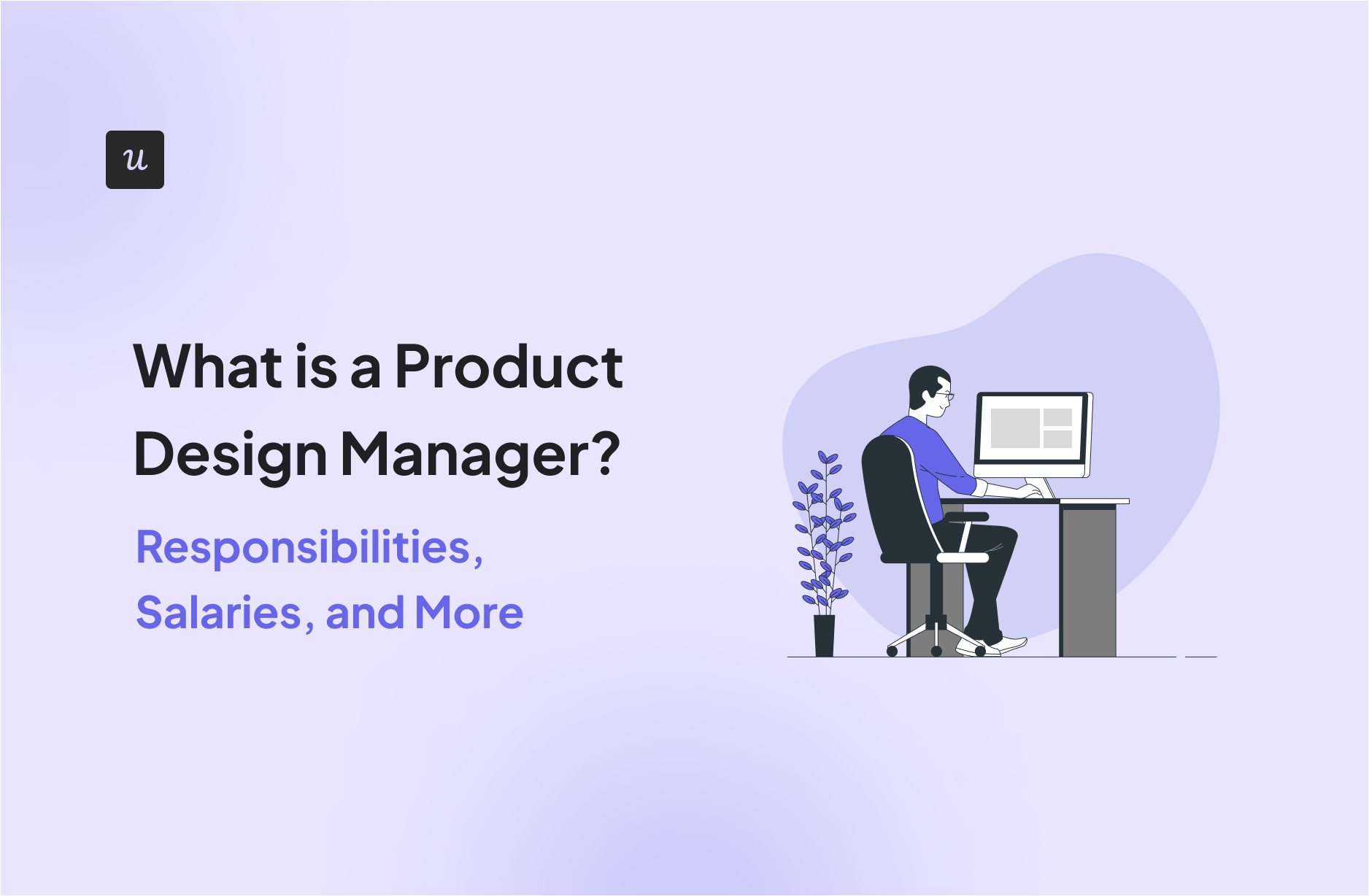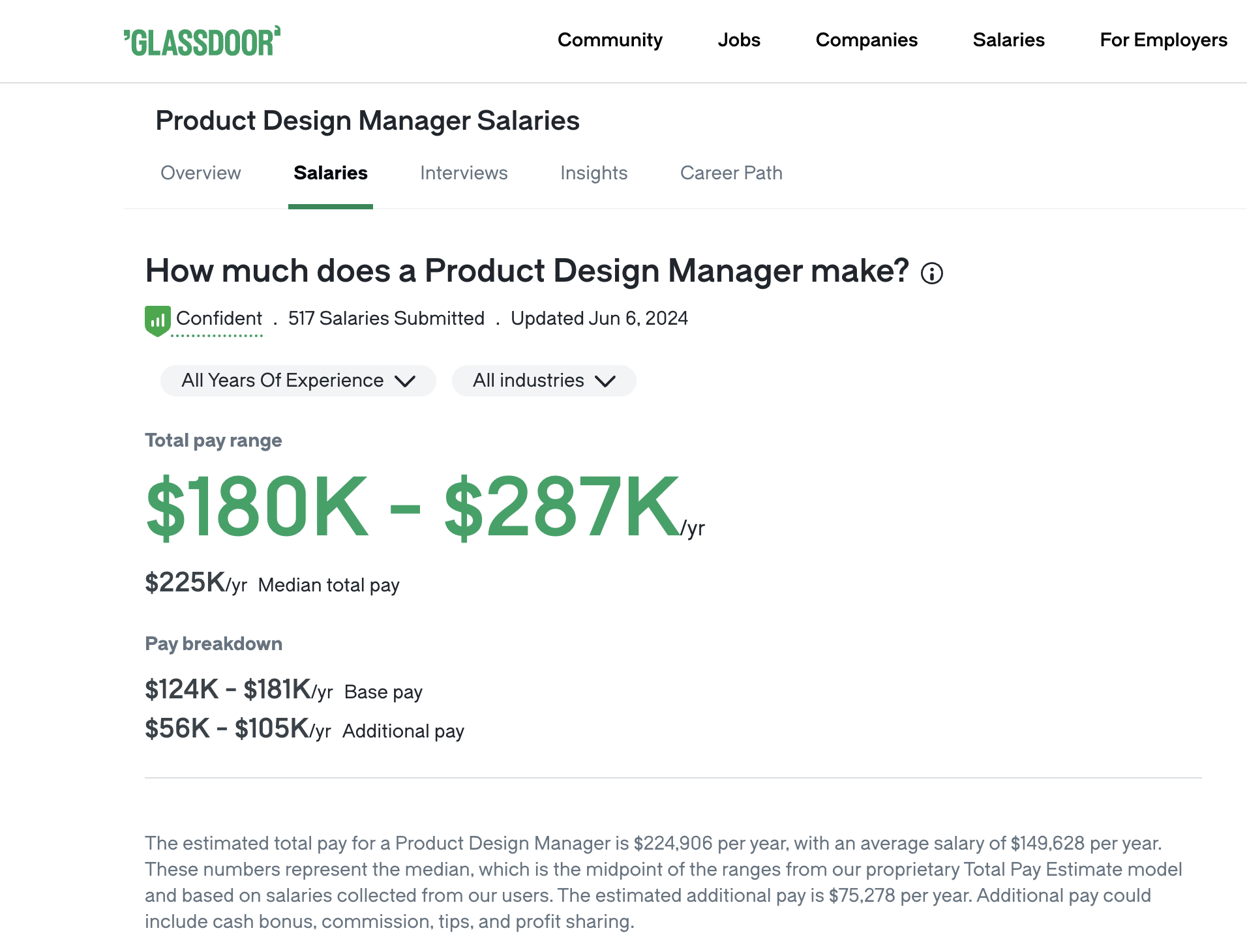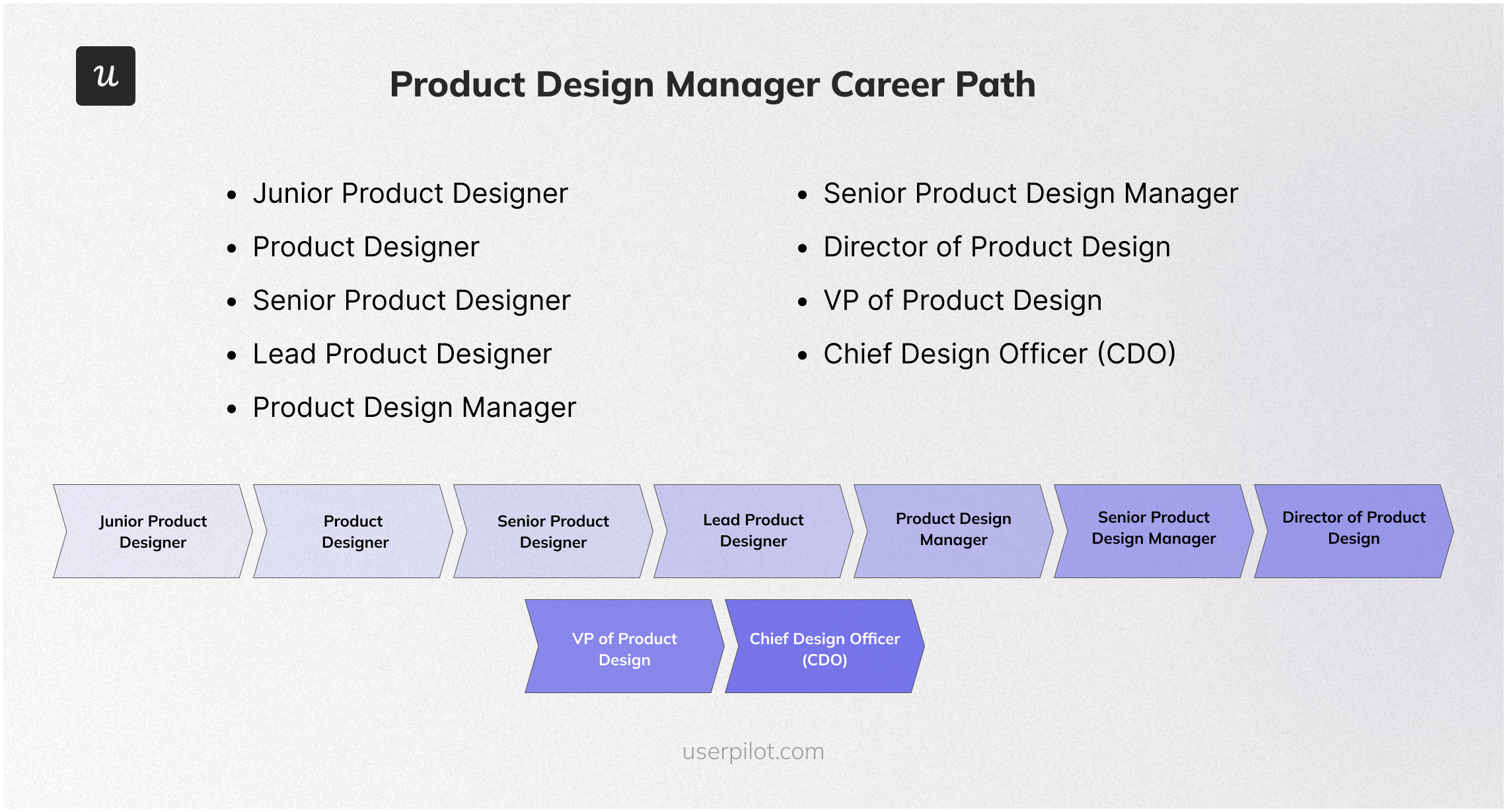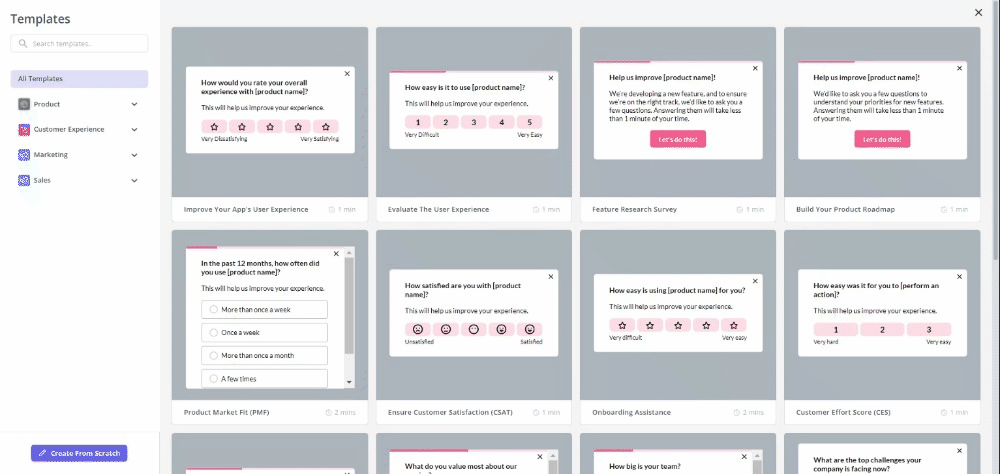
Try Userpilot Now
See Why 1,000+ Teams Choose Userpilot

What is a product design manager?
A product design manager in the SaaS industry oversees the design and development of software products. Their primary role involves leading a team of designers to create user-friendly and aesthetically pleasing interfaces.
They collaborate closely with product managers, developers, and stakeholders to ensure the design aligns with business goals and user needs.
Additionally, they focus on optimizing the user experience and staying updated with the latest design trends and technologies. Their goal is to deliver a seamless and engaging user experience that enhances the product’s functionality and appeal.
What does a product design manager do?
A product design manager leads a team of designers to create and refine software products, focusing on user experience and interface design.
They work closely with cross-functional teams, including product managers and engineers, to translate user needs and business requirements into effective design solutions.
Responsibilities include overseeing the entire design process from concept to final implementation, ensuring design consistency, conducting usability testing, and iterating on feedback.
They also mentor designers, fostering a collaborative and innovative environment to produce high-quality, user-centric products.
Product design manager’s main responsibilities
Product design manager plays a critical role in shaping the user experience and visual design of SaaS products. Here are the main responsibilities and duties:
- Leading and mentoring a team of designers, fostering a collaborative and innovative design environment.
- Collaborating with product managers and developers to define design requirements and objectives specific to SaaS products.
- Overseeing the entire design process from user research and wireframing to prototyping and final implementation.
- Ensuring design consistency and adherence to brand guidelines across all SaaS products.
- Conducting usability testing and gathering user feedback to iterate and improve design solutions.
- Creating and maintaining design systems and component libraries to ensure efficiency and consistency in product design.
- Staying updated with the latest design trends, tools, and technologies relevant to the SaaS industry.
- Working closely with engineering teams to ensure designs are implemented accurately and efficiently.
- Balancing user needs, business goals, and technical constraints to deliver optimal design solutions.
- Managing project timelines, deliverables, and resources to ensure timely and high-quality output.
- Advocating for user-centric design principles and best practices within the organization.
This list encompasses the core responsibilities of ensuring the effective design and delivery of high-quality SaaS products and enhancing user experience and product functionality.
Product design manager salary
Product design managers are crucial in shaping the user experience and interface of products, and their compensation varies widely based on experience, location, industry, and the specific company.
By Experience Level
- Junior Product Design Manager (2-4 years): Typically earns around $80,000 to $100,000 per year.
- Mid-level Product Design Manager (5-7 years): Usually earns between $100,000 and $130,000 per year.
- Senior Product Design Manager (8+ years): Can earn from $130,000 up to $160,000 per year.
By Location
- San Francisco, CA: Average salary is approximately $150,000 to $172,000 per year.
- New York, NY: Average salary is around $130,000 to $150,000 per year.
- Chicago, IL: Average salary is about $120,000 to $130,000 per year.
- Austin, TX: Average salary is between $110,000 and $120,000 per year.
By Industry
- Technology: Product Design Managers in tech companies can earn between $120,000 and $150,000 per year.
- Finance: Those in financial technology (FinTech) can expect to earn around $110,000 to $140,000 annually.
- Healthcare: Typically earn between $100,000 and $130,000 per year.
- Retail: Salaries range from $90,000 to $120,000 per year.
Highest Paying Companies
- Meta (Facebook): Total compensation ranges from $287,000 to $434,000 per year.
- Apple: Total compensation is approximately $250,000 to $363,000 per year.
- Microsoft: Total compensation ranges from $214,000 to $290,000 per year.
These figures provide a general overview. For precise and updated information, it’s best to refer directly to salary reporting websites like Glassdoor, Indeed, or Reed.

Product design manager career path
Here is what a typical product design manager career path looks like:
- Junior product designer: Entry-level position focusing on assisting senior designers, creating design components, and conducting user research. To progress in this position, you need to build a strong portfolio, learn from senior designers, master design tools, and seek feedback to improve your skills.
- Product designer: Involved in designing product interfaces, conducting usability tests, and collaborating with cross-functional teams. To progress in this position, you need to take on more complex projects, develop a deep understanding of user experience (UX) principles, and start leading smaller design initiatives.
- Senior product designer: Leads major design projects, mentors junior designers, and plays a key role in strategic design decisions. In this position, you need to focus on leadership skills, contribute to creating design systems, and build strong relationships with product managers and developers.
- Lead product designer: Oversees the design team, ensures design consistency across projects, and aligns design goals with business objectives. Your primary focus needs to be on developing project management skills, driving innovation within the team, and engaging in high-level strategic planning.
- Product design manager: Manages the design team, coordinates design projects, and ensures alignment with business goals and user needs. To progress in this position, learn to enhance leadership and managerial skills, stay updated with industry trends, and focus on optimizing team performance and design processes.
- Senior product design manager: Manages larger design teams, oversees multiple projects, and plays a critical role in company-wide design strategy. A career progression tip would be to develop a vision for the design department, influence company design culture, and mentor upcoming leaders within the team.
- Director of product design: Sets the overall design direction for the company, collaborates with top executives, and ensures the design vision aligns with the company’s mission. Focus on strategic leadership, expand your influence across departments, and drive the company’s design innovation.
- VP of product design: Responsible for the entire design organization, driving design excellence and contributing to the overall business strategy. Strengthen executive leadership skills, maintain a forward-thinking design vision, and foster a culture of creativity and innovation.
- Chief design officer: Top-level executive overseeing all design aspects of the company, ensuring cohesive design strategy across all products and services. Focus on visionary leadership, drive company-wide design integration, and champion design as a core business value.
By progressing through these roles, continuously developing skills, and taking on increasing responsibilities, one can advance to higher positions within the product design field.
Best practices for being a great product design manager
To excel as a product design manager, it’s essential to adopt best practices that foster innovation, collaboration, and user-centric design.
- Foster a Collaborative Environment: Encourage open communication and collaboration within the team, creating a space where designers feel comfortable sharing ideas and feedback, leading to more innovative solutions.
- Prioritize User-Centric Design: Always keep the end-user in mind by conducting regular user research and usability testing to ensure that the designs meet user needs and provide a seamless experience.
- Stay Updated with Industry Trends: Keep abreast of the latest design trends, tools, and technologies to ensure that the team’s skills remain relevant and that the products are competitive in the market.
- Mentor and Develop Your Team: Invest time in mentoring and coaching your designers by providing regular feedback, opportunities for professional growth, and encouraging continuous learning.
- Align Design with Business Goals: Ensure that design initiatives are aligned with the overall business objectives to create products that not only delight users but also drive business success.
- Effective Project Management: Utilize strong project management skills to keep design projects on track by setting clear milestones, managing resources efficiently, and ensuring timely delivery of high-quality designs.
- Encourage a Culture of Innovation: Promote experimentation and innovation within the team, encouraging designers to explore new ideas and approaches, which can lead to breakthrough design solutions.
Product design manager FAQs
- What is the difference between a product manager and a product design manager? A product manager focuses on the overall strategy, roadmap, and business objectives of a product, while a product design manager focuses on the user experience (UX) and visual design aspects, ensuring the product is user-friendly and aesthetically pleasing.
- How do product designers and product managers work together? Product designers and product managers collaborate closely to align design with business goals, conduct user research, and ensure the final product meets both user needs and business objectives.
- Is product design a good career? Yes, product design is a rewarding career that offers opportunities for creativity, problem-solving, and the ability to make a significant impact on user experience and business success.
- What degree do you need to be a product manager? A degree in business administration, marketing, computer science, or a related field is typically needed to become a product manager, along with relevant experience and skills in product development and management.
- What qualifications do I need to be a product designer? To be a product designer, you generally need a degree in design, human-computer interaction, or a related field, along with strong skills in UX/UI design, proficiency in design tools, and a robust portfolio of design work.
Conclusion
We hope this guide has provided you with valuable insights into the roles, responsibilities, and rewards associated with this role.
Looking into tools for product design managers? Userpilot is an all-in-one product platform with engagement features and powerful analytics capabilities. Book a demo to see it in action!








